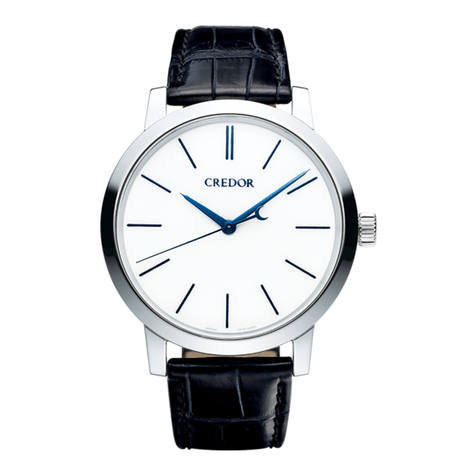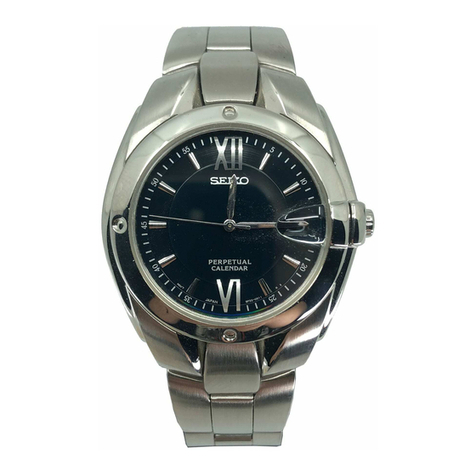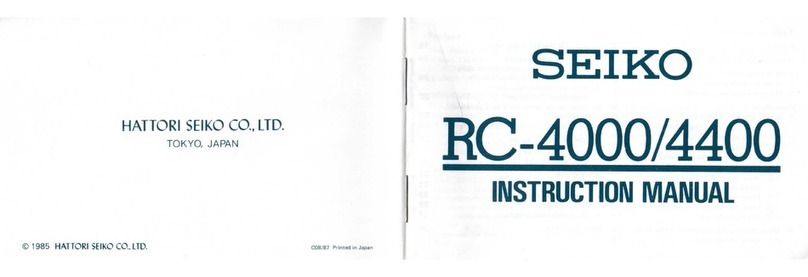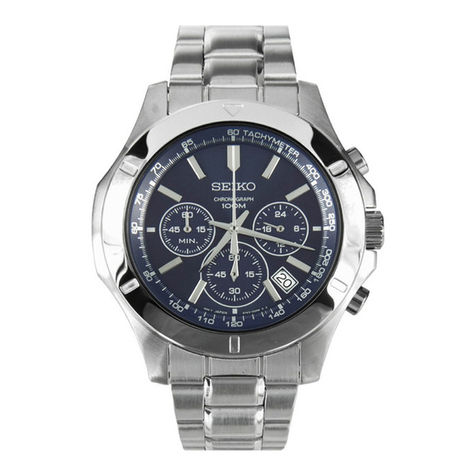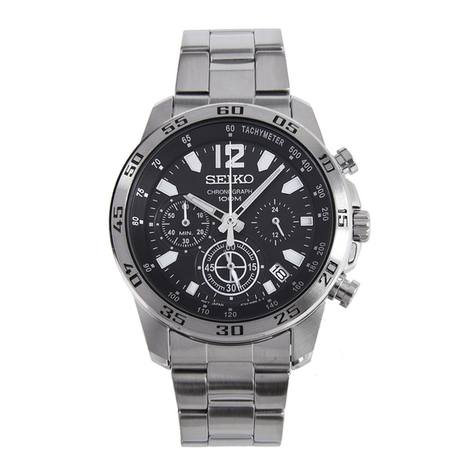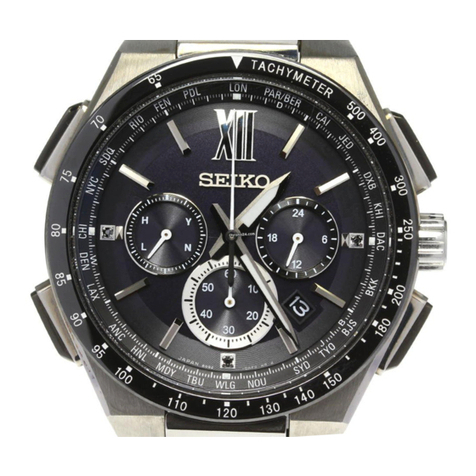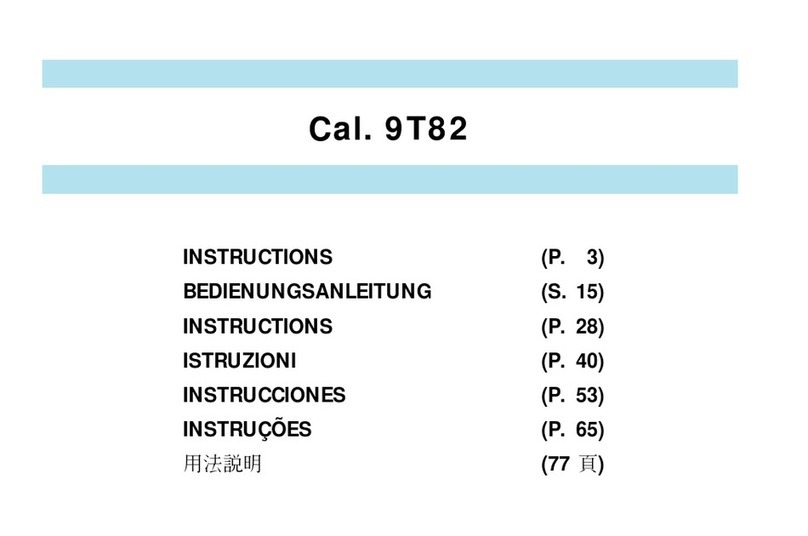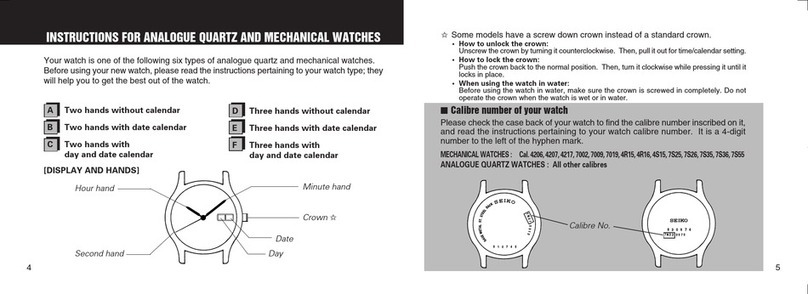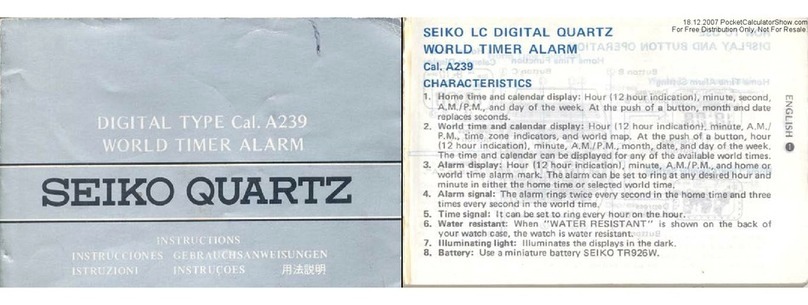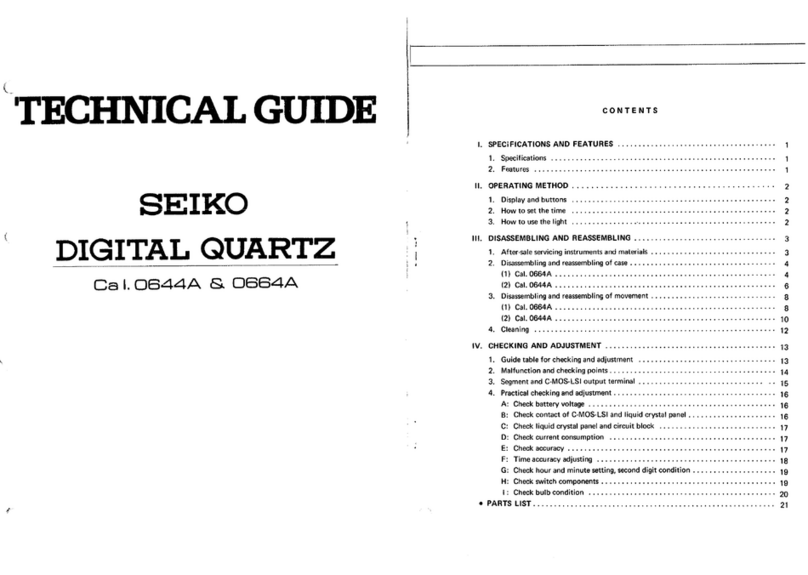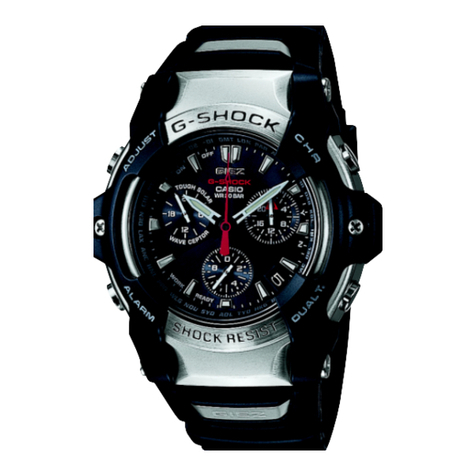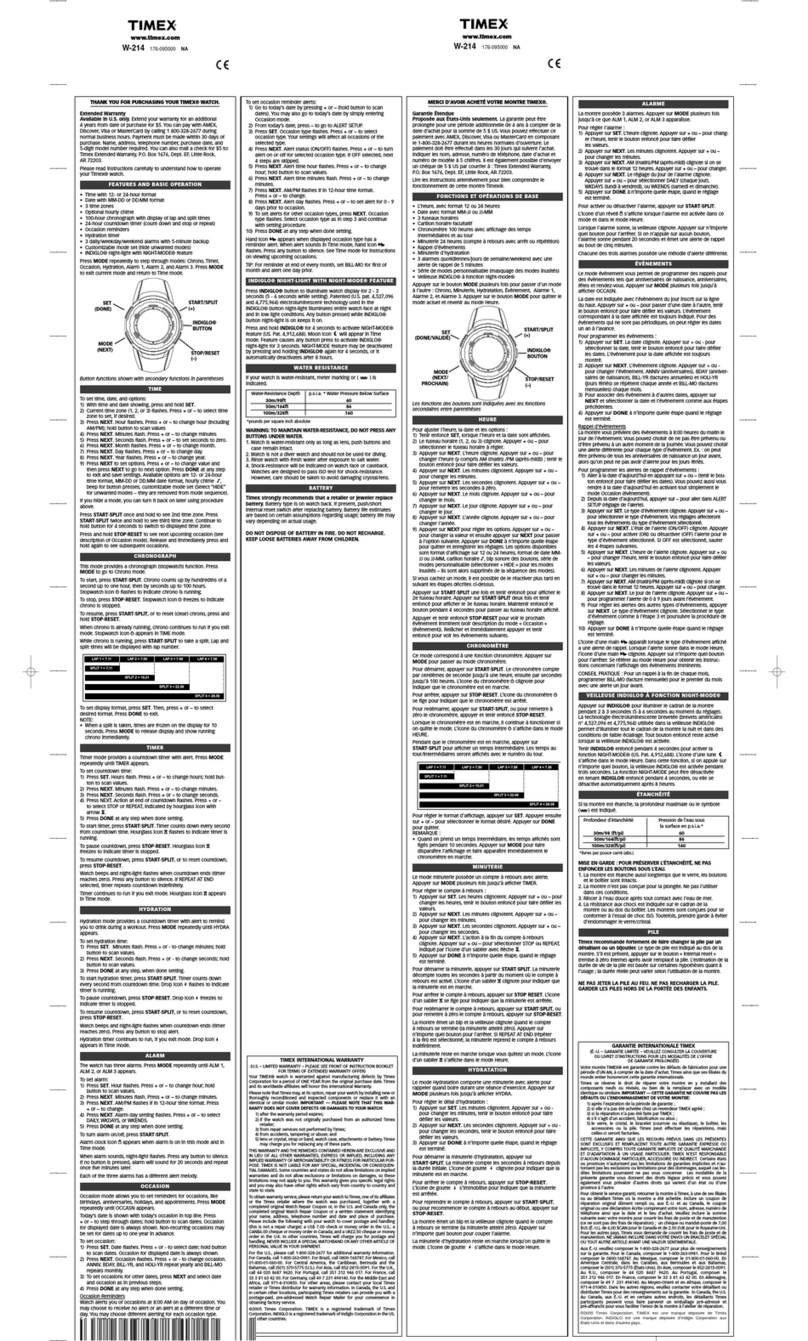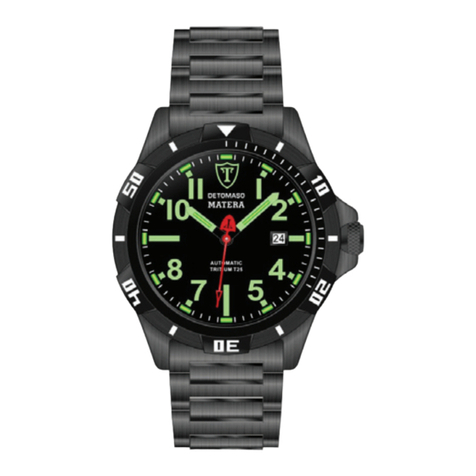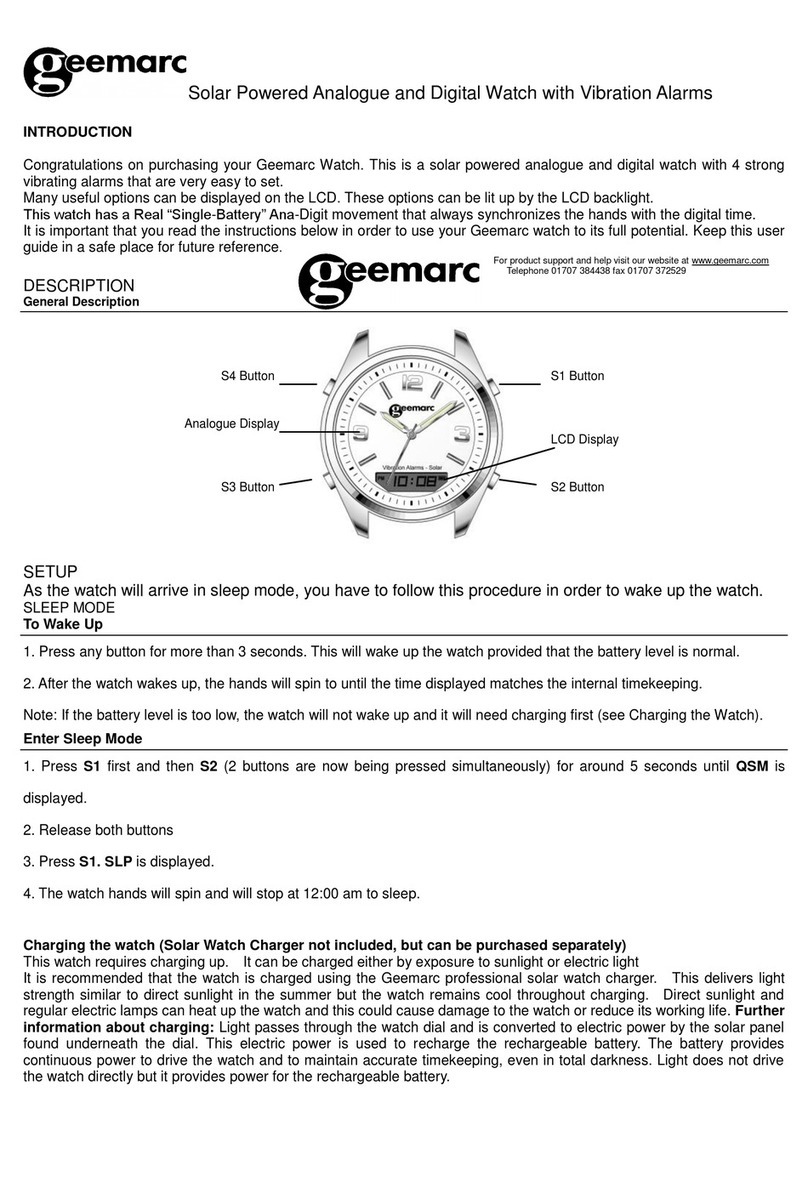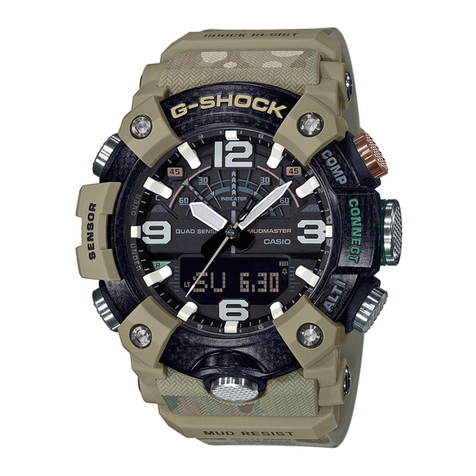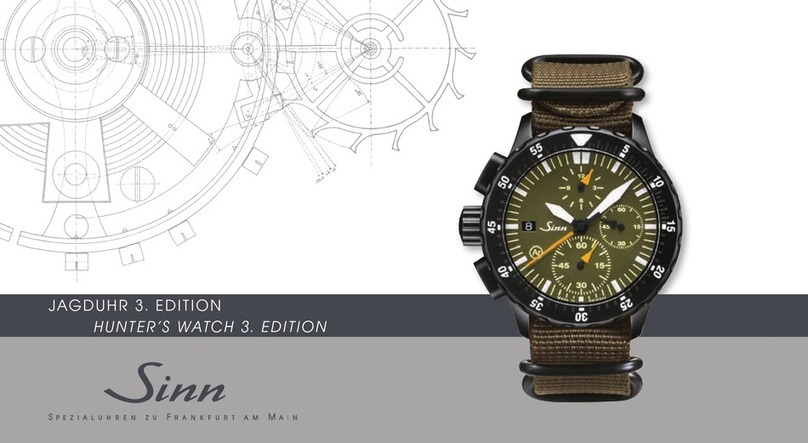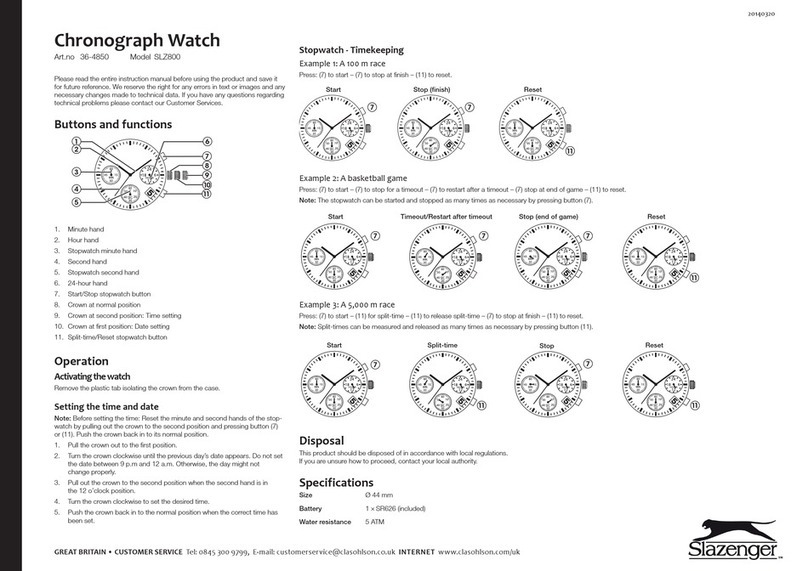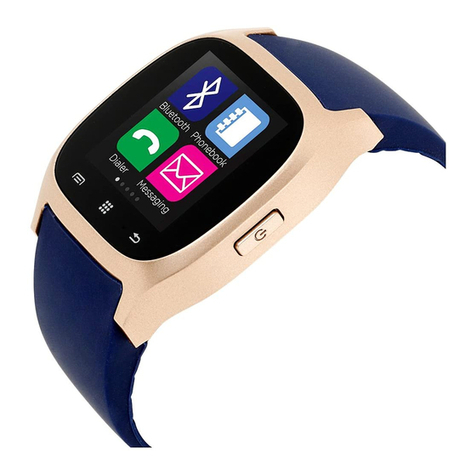English
2
ENGLISH
3
CONTENTS
Page
CHARACTERISTICS OF A MECHANICAL WATCH ...................................................... 4
NAMES OF THE PARTS .............................................................................................. 5
HOW TO USE............................................................................................................... 8
HOW TO SET THE TIME, DAY AND DATE................................................................... 10
HOW TO READ THE POWER RESERVE INDICATOR ................................................. 16
TO PRESERVE THE QUALITY OF YOUR WATCH........................................................ 18
PLACES TO KEEP YOUR WATCH ................................................................................ 22
NOTES ON OVERHAUL .............................................................................................. 23
NOTES ON GUARANTEE AND REPAIR ...................................................................... 23
TROUBLESHOOTING................................................................................................... 24
ACCURACY OF MECHANICAL WATCHES ................................................................. 25
SPECIFICATIONS ......................................................................................................... 27
You are now the proud owner of a SEIKO Automatic Watch Cal. 6R21/6R24. To ensure its optimum perform-
ance, please read the instructions in this booklet carefully before using it. Please keep this manual handy
for ready reference.
Sie sind jetzt stolzer Besitzer einer SEIKO Automatikuhr Kal. 6R21/6R24. Lesen Sie diese Bedienungsanlei-
tung vor der Verwendung aufmerksam durch, um ihre optimale Nutzung zu gewährleisten. Heben Sie diese
Bedienungsanleitung gut auf, um jederzeit wieder nachlesen zu können.
Vous voici l'heureux propriétaire d'une montre automatique SEIKO Cal. 6R21/6R24. Pour en obtenir des
performances optimales, veuillez lire attentivement cette brochure avant d'utiliser la montre. Conservez ce
manuel pour vous y référer en cas de besoin.
Congratulazioni per l’acquisto di questo nuovo Orologio Automatico SEIKO Cal. 6R21/6R24. Per poter utiliz-
zare l’orologio al massimo delle sue prestazioni leggere attentamente questo manuale di istruzioni prima di
passare all’uso dell’orologio stesso, e conservarlo poi per qualsiasi eventuale futura consultazione.
Usted es ahora el orgulloso propietario de un Reloj Automático de SEIKO Cal. 6R21/6R24. Para asegurar el
óptimo rendimiento de su reloj, sírvase leer cuidadosamente las instrucciones contenidas en este manual
antes de su uso. Guarde este manual en un lugar muy accesible para la rápida referencia.
Você poderá agora sentir-se orgulhoso de possuir um Relógio Automático SEIKO Cal. 6R21/6R24. Para ga-
rantir o seu excelente rendimento, leia atentamente as instruções contidas neste opúsculo antes de usá-lo.
Conserve este manual para consultas futuras.

